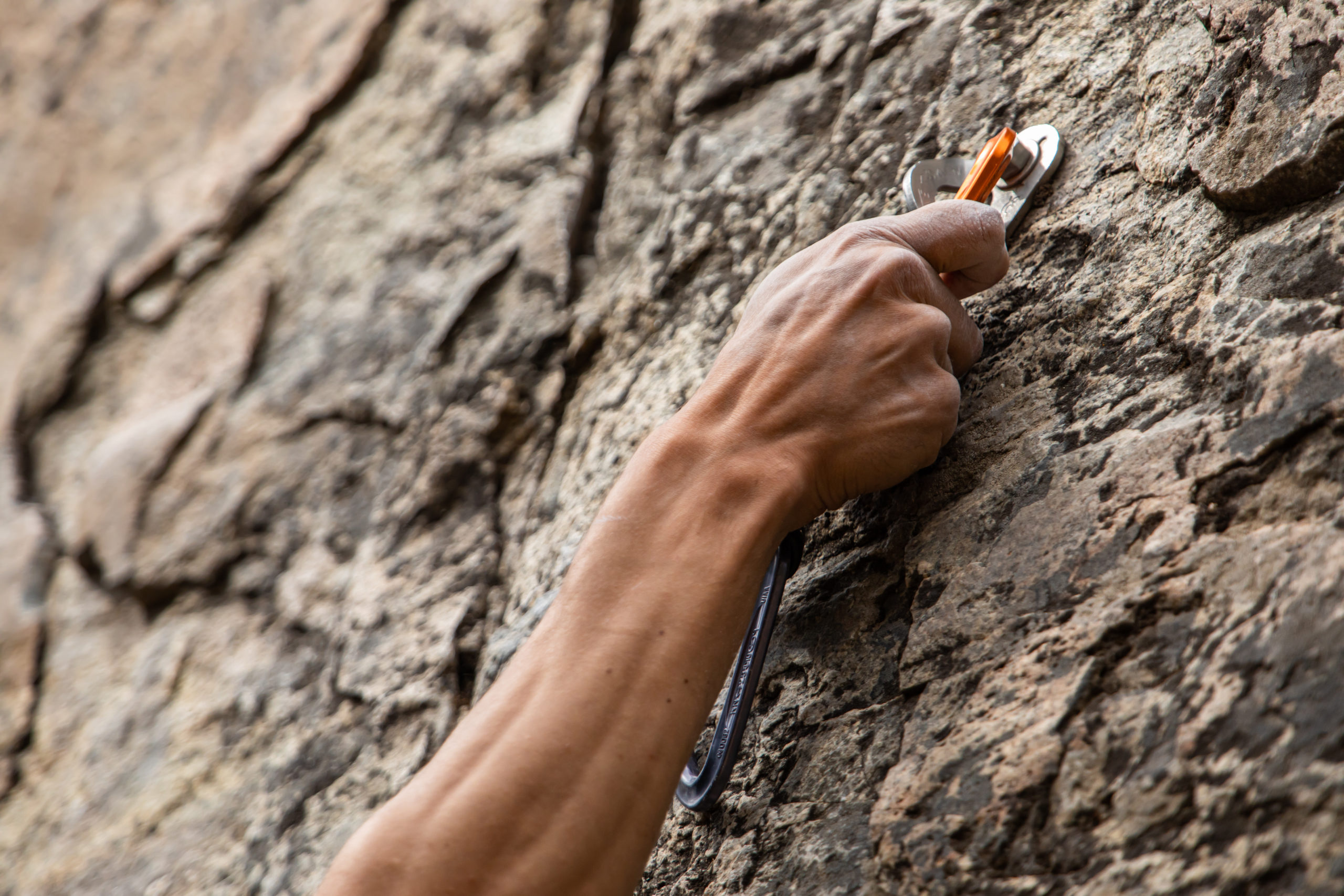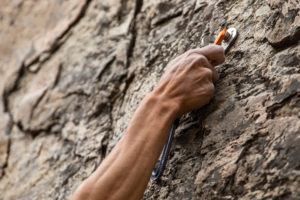
Injuries to the flexor tendon pulleys are common for rock climbers. Here’s how an injury may occur and how it will be treated by your hand therapist.
 What is a Flexor Tendon Pulley Rupture?
What is a Flexor Tendon Pulley Rupture?
Pulley ruptures are common in rock climbers. A common scenario is when a rock climber feels a sharp pain and a ‘pop’ sensation in the fingers. This may indicate an injury to the flexor tendon pulleys.
The flexor tendons, flexor digitorum profundus (FDP) and flexor digitorum superficialis (FDS), are responsible in flexing your fingers into a fist. The tendons are held close to the bone by a sheath and multiple pulleys.
The main two pulleys in the finger are the A2 pulley (sits at the level of the proximal phalanx) and the A4 pulley (at the middle phalanx level). The pulleys increase the efficiency of the flexor tendon and prevent bowstringing.
During rock climbing, the finger flexors are under a huge amount of stress, which in turn places stress on the supporting pulleys and flexor tendon sheath.
Crimp grip is where the proximal phalangeal joint is very flexed beyond 90 degrees, which places a tremendous force on the A2 pulley.
During a heavy move involving one or two finger crimp hold, rock climbers may feel a pop as the pulley tears. Tears can be partial or complete ruptures. Partial tears where there is no bowstringing can be treated non-operatively. However if bowstringing occurs, referral to a surgeon is recommended.
Treating Pulley Ruptures with a Hand Therapist
A hand therapist can splint your finger with thermoplastic ring splints and/or taping to support the pulley as it heals. A short time of rest from rock climbing is required.
Your therapist will be able to give you graded exercises and strengthening to slowly build you back up to using your hand for daily function and in preparation for rock climbing. Long term use of splints and taping may be required when rock climbing.
If you have any questions regarding an injury to the hands, wrist, or arms or would like to book an appointment, please don’t hesitate to get in touch.
Hit these links for more information on finger exercises, wrist exercises, arm exercises, elbow exercises and shoulder exercises.
